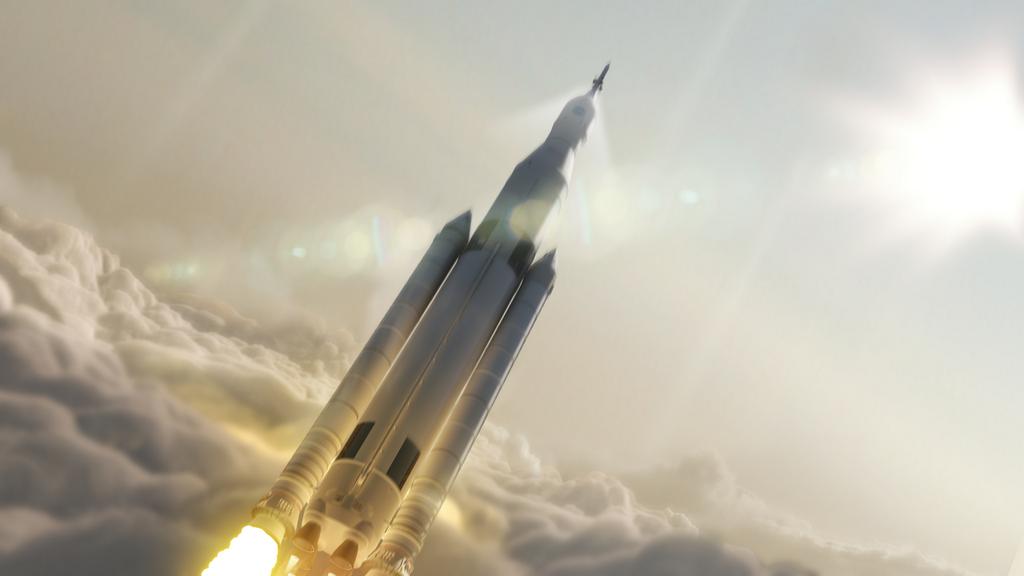On The 30th Anniversary Of The Space Shuttle Discovery, Let’s Talk About Giant Rockets & Life On Mars

Key review completed for @NASA_SLS – the world’s most powerful rocket on a #JourneyToMars: http://t.co/zRNWmVTipS pic.twitter.com/1He8p0ROOB
— NASA (@NASA) August 27, 2014
In another 30 years the next generation might be reporting from Mars! Or at least, that’s what I’d like to see happen. Also cats on mars.
August 30, 1984 is when the Space Shuttle Discovery finally took off, taking more than thirty missions, and today the world looks back. CBS writes:
When the maiden flight finally took off, at 8:41 a.m. on Aug. 30, Discovery blasted the American space program to new heights. It flew 39 times over the next 27 years – more than any other shuttle vehicle. Many space history firsts occurred on board this 6,870-pound vehicle: it took the first Senator to space in 1985, it took the first Latina to space in 1993 and it flew the oldest man into space, 77-year old John Glenn.
Discovery took its last space mission in 2011 and now hangs out at the Smithsonian National Air and Space Museum in Washington, D.C. Valerie Neal, Curator of the Space History Division at the Smithsonian National Air and Space Museum told CBS, “Nothing like a space shuttle has flown before and it is unlikely that anything will fly again that is large and as versatile as a space shuttle orbiter.”
But just this week, NASA publicized their upcoming “heavy-life rocket” or Space Launch System (SLS). Reuters writes, “The rocket is a modified version of the shuttle-derived, heavy-lift booster developed under NASA’s previous exploration initiative known as Constellation.”
NASA’s new heavy-lift rocket, designed to fly astronauts to the moon, asteroids and eventually Mars, likely will not have its debut test flight until November 2018, nearly a year later than previous estimates, agency officials said on Wednesday. NASA is 70 percent confident of making a November 2018 launch date, given the technical, financial and management hurdles the Space Launch System faces on the road to development, NASA associate administrators Robert Lightfoot and Bill Gerstenmaier told reporters on a conference call.
NASA estimates it could spend almost $12 billion developing the first of three variations of the rocket and associated ground systems through the debut flight, and potentially billions more to build and fly heavier-lift next-generation boosters, a July 2014 General Accountability Office report on the program said.
And speaking of eventually getting to Mars, British physicist Brian Cox (not to be confused with the actor of the same name) recently spoke to the Wall Street Journal about David Bowie’s “Life on Mars” as it pertains to where we are in space exploration in 2014.
“As a physicist, I spend a lot of time looking at the sky and wondering how the universe works. David Bowie’s ‘Life on Mars?’ first captured my imagination when I heard it on his 1971 album, ‘Hunky Dory.’ The song approaches magical realism,” he says. “‘Mars’ was released a couple of years after the Apollo 11 moon landing in ’69, when there was already talk about landing a probe on Mars. Space was the future then. Today, we think more about how small our next cellphone is going to be. There’s something about that period and those kinds of wondrous ideas about space that still intrigues me. One interpretation of the line ‘Is there life on Mars?’ is that it’s merely a pop-culture cliché, a shortcut to a different question. But when I listen to the song, I hear someone dreaming about the possibilities of space and I’m elated.”
Harkening back to NASA’s rocket news, I’m sure Cox is even more excited.
“We are on a journey of scientific and human exploration that leads to Mars,” said NASA Administrator Charles Bolden. “And we’re firmly committed to building the launch vehicle and other supporting systems that will take us on that journey.”
Read more about the SLS, all 70-metric-tons of it, on NASA’s website. If you were a sentient being at the time, would you share a Discovery launch memory with us?
Are you following The Mary Sue on Twitter, Facebook, Tumblr, Pinterest, & Google +?
Have a tip we should know? tips@themarysue.com